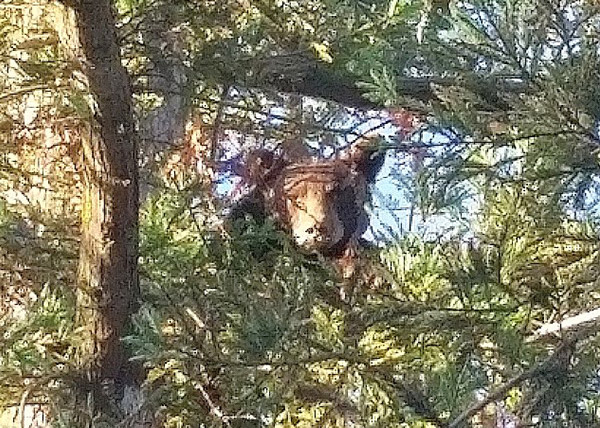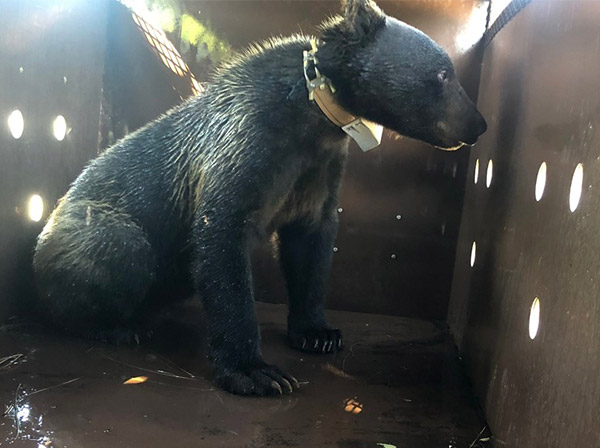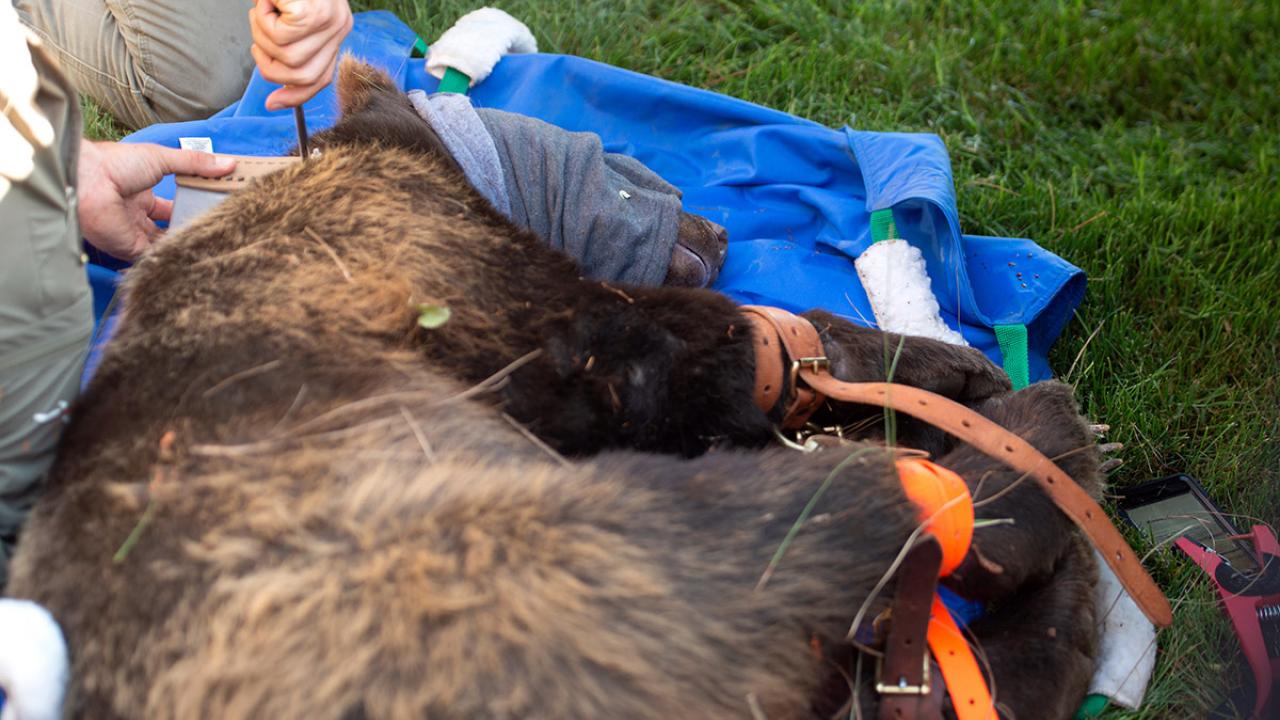The black bear captured on campus last week was certainly an unusual sight, but experts weren’t surprised to see the young male looking for a new place to live. He had reached the age at which he could fend for himself, and they figure mom sent him packing.
“Dispersal of subadult male bears in search of a new place to call home is the absolute norm,” said Roger Baldwin, a wildlife specialist with the UC Davis Department of Wildlife, Fish and Conservation Biology who studies conflicts between people and wildlife. “The only difference is that this one got caught up going in the wrong direction and made it to campus.”

He said conflict arises when bears make permanent homes in areas populated by humans, or vice versa.
“This isn’t the case here, and isn’t likely to be a common concern in Davis given a lack of preferred habitat for bears here,” Baldwin said.
The bear that wound up at UC Davis on June 4 may have tried out a few other habitats before reaching Old Davis Road at the south edge of the main campus. Bear sightings had been reported in Vacaville and Dixon in the days prior to the campus visitor’s arrival, leading to some speculation that it was the same animal.
“That’s not a great distance to move,” said Brian Todd, an associate professor in the Department of Wildlife, Fish and Conservation Biology. “The curious part is that it moved that far and wasn’t in the kind of habitat it would have been accustomed to. After one or two miles through rural habitat you’d think it would have realized it was going the wrong way and stopped.”
FROM SOCIAL MEDIA: BEARLY SERIOUS
- Olivia Luchini, student: “Good morning, Davis! The sun is shining, the birds are chirping, the bears are - THE BEARS?!”
- Steve Luck, director of the Center for Mind and Brain: “A bear was sighted on the UC Davis campus today. Perhaps he heard that we’re an open and welcoming campus that values diversity of all kinds.”
- Mark Takata, application programmer: “I wonder if it called for a rideshare to get over to campus. Someone should call UBEAR & see.”
A student was the first to spot the bear, around 5:45 a.m. Authorities caught up with the bear at Solano Field, near the Environmental Horticulture complex. Officers shot him with a tranquilizer dart after he came down from a tree about 8:30 a.m.; he then climbed another tree, only to fall to the ground when the tranquilizer took effect.
Officers released the bear five hours later, not west of Davis as had been planned, but in the Colusa area north of Davis.
Bears are often seen in unusual locations this time of year, according to the California Department of Fish and Wildlife.
“There is a definite uptick in bear activity, which occurs every year around this time, all across the state,” the department said in a list of frequently asked questions about bears. “In most instances, we’re witnessing the dispersal of young male black bears. Young bears typically spend about two years with their mother, after which the mother chases off her young male offspring in the spring to fend for themselves.”

The department said any bear sightings should be reported to its regional offices during normal business hours or to police and fire departments the rest of the time, but emphasized that black bears are usually harmless.
“Black bears very rarely pose any kind of public safety threat and are not often a threat to domestic dogs and cats. For the most part, they do their very best to stay as far away from people as possible.”
State wildlife experts will now know if the UC Davis bear deviates from that behavior again, having fitted him with a tracking collar. As of Monday (June 10), they hadn’t yet checked the collar’s location, said Kirsten Macintyre, a spokeswoman with the department.
